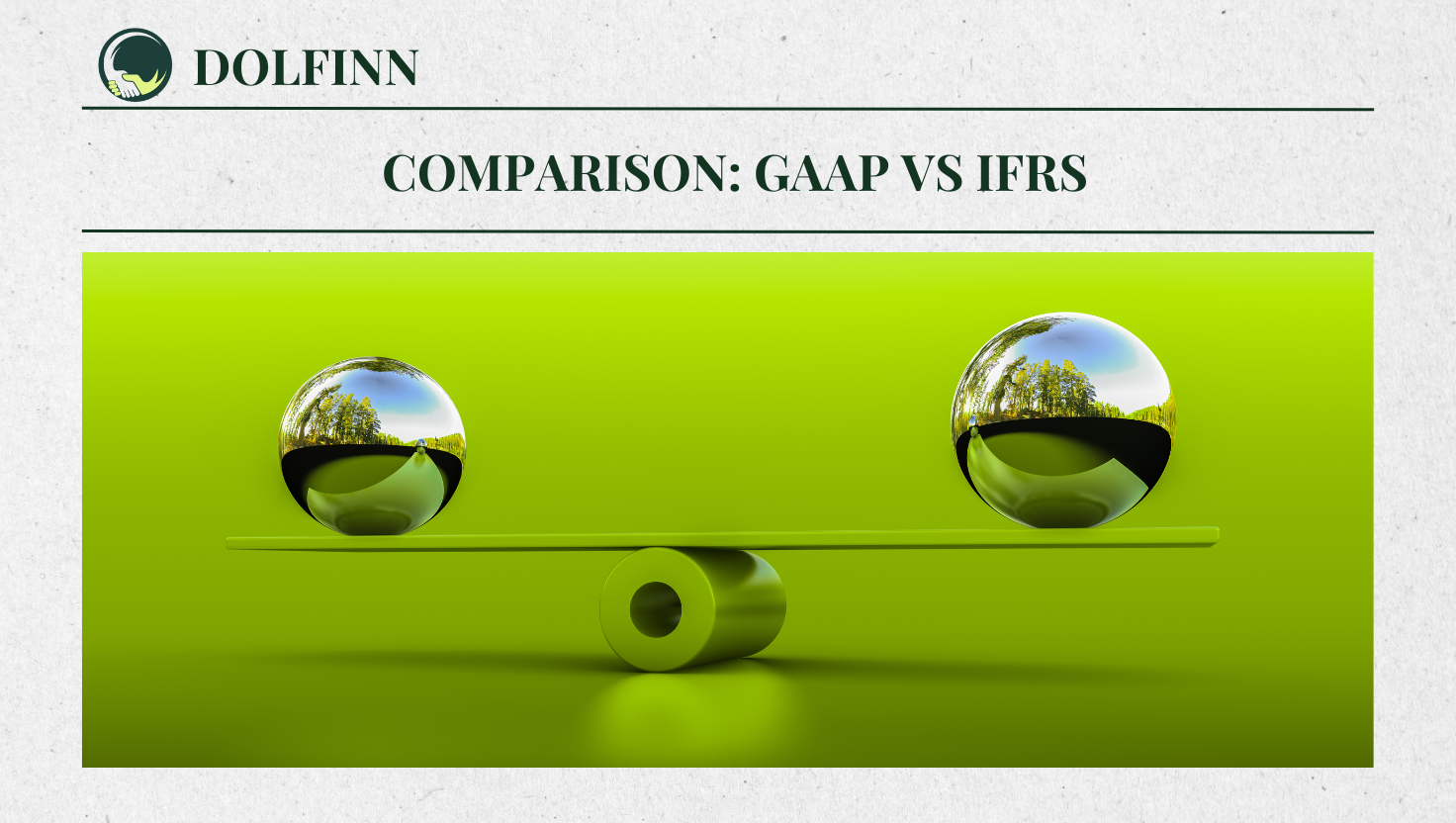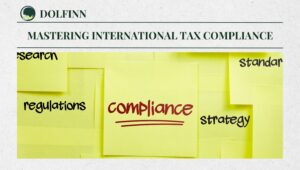
Generally Accepted Accounting Vs International Financial Reporting Standards
When it comes to financial reporting, the language of numbers isn’t universal. Countries across the globe adhere to their own accounting standards to compile and present financial statements. In the United States, companies follow Generally Accepted Accounting Principles (GAAP), while much of the world uses the International Financial Reporting Standards (IFRS).
These two frameworks set the stage for how financial information is recorded, reported, and analyzed. This difference in accounting standards often leads to a comparison of GAAP vs IFRS, as these frameworks influence how financial information is recorded, reported, and analyzed globally
This blog unpacks the fundamental differences between GAAP vs IFRS, offering a detailed comparison to help you understand their methodologies, key features, and global accounting framework implications.
What Are GAAP and IFRS?
Understanding GAAP
GAAP, short for Generally Accepted Accounting Principles, is the standard framework for financial reporting in the United States. Public companies are required to adhere to GAAP when presenting financial statements, and the rules are overseen by the Financial Accounting Standards Board (FASB).
GAAP focuses on:
- Revenue recognition
- Balance sheet classification
- Outstanding share measurement
For example, under GAAP, companies using financial metrics outside its guidelines (non-GAAP measures) must disclose and label them distinctly in their reports. This ensures transparency for investors.
Understanding IFRS
IFRS, or International Financial Reporting Standards, is developed and maintained by the International Accounting Standards Board (IASB). Unlike GAAP, IFRS is principles-based, allowing for flexibility in interpretation while maintaining global consistency.
The aim of IFRS is to foster:
- Global comparability
- Financial transparency
- Investor confidence
For instance, IFRS requires some R&D costs, like prototyping, to be capitalized, enabling better representation of intangible assets.
Global Adoption of IFRS
Currently, over 160 jurisdictions have adopted IFRS, with 147 mandating its use for publicly listed entities. The European Union (EU), many Asian countries, and South American nations predominantly rely on IFRS for financial reporting.
While the U.S. Securities and Exchange Commission (SEC) has expressed interest in transitioning from GAAP to IFRS, the shift has been slow due to challenges in implementation and reconciliation.
Key Differences Between GAAP and IFRS
Rules-Based vs. Principles-Based
The core difference lies in their methodology:
- GAAP: Rules-based, offering explicit guidelines for almost every scenario.
- IFRS: Principles-based, emphasizing the essence of transactions over rigid rules.
For example, IFRS’s flexibility can result in more extensive disclosures, while GAAP’s detailed rules ensure consistency across financial statements.
Inventory Accounting under IFRS
One of the most notable distinctions lies in inventory treatment:
- GAAP allows Last-In, First-Out (LIFO) as a method of inventory valuation.
- IFRS prohibits LIFO, permitting only First-In, First-Out (FIFO) and Weighted Average-Cost methods.
Additionally, the Inventory accounting under IFRS permits inventory reversals under specific conditions, whereas GAAP does not.
Example: A manufacturing company using LIFO under GAAP to minimize taxable income might face challenges transitioning to IFRS, as LIFO would be disallowed.
Investment Recognition
Both GAAP and IFRS classify investments into categories based on asset type. However, their income recognition approaches differ:
- GAAP: Income recognition depends largely on the asset’s legal form.
- IFRS: Focuses on cash flow timing, disregarding legal form.
Example: A company holding derivative contracts might report gains differently under GAAP versus IFRS due to these criteria.
Research and Development (R&D)
R&D expenditures are another area of divergence:
- Under GAAP, all R&D costs are expensed as incurred.
- Under IFRS, certain R&D costs can be capitalized, such as costs related to prototyping or internal software development.
Example: A tech startup developing new software may report lower expenses under IFRS due to capitalized development costs, potentially improving profitability metrics.
Key Similarities Between GAAP and IFRS
Despite their differences, both standards share common ground:
- Both frameworks aim to provide reliable financial information for investors and stakeholders.
- Revenue recognition principles align in many areas, especially with the adoption of the joint Revenue Recognition Standard (ASC 606).
- Both require comprehensive disclosures to ensure transparency.
IASB vs. FASB
The two governing bodies behind IFRS and GAAP play critical roles in maintaining and evolving these standards:
- IASB (International Accounting Standards Board): Based in the UK, oversees IFRS and ensures global applicability.
- FASB (Financial Accounting Standards Board): Based in the U.S., focuses on refining GAAP to meet domestic needs.
Both organizations periodically collaborate to address convergence issues, although significant differences remain.
Which Is Better? GAAP vs IFRS?
The debate over which standard is better boils down to perspective:
- GAAP’s rules-based structure ensures precision and comparability, ideal for domestic reporting.
- IFRS’s principles-based approach allows for adaptability and global alignment, particularly for multinational corporations.
For instance, companies operating in multiple countries may prefer IFRS for its consistency across borders, while U.S.-centric firms might stick to GAAP for compliance ease.
Future of Financial Reporting
As globalization continues, the push for a unified accounting framework grows stronger. Adopting IFRS globally could simplify financial reporting for multinational corporations and attract more international investments. However, achieving full convergence with GAAP presents significant regulatory and cultural challenges.
Also you need to keep in mind the 10 GAAP principles
FAQs Related to GAAP vs IFRS
What is the primary difference between GAAP and IFRS?
The primary difference lies in their approach: GAAP is rules-based, providing specific guidelines for various scenarios, whereas IFRS is principles-based, allowing for more flexibility and interpretation in financial reporting.
Why does IFRS prohibit the use of the LIFO inventory method while GAAP allows it?
IFRS prohibits LIFO because it may distort income and does not accurately reflect inventory flow. GAAP, however, permits both LIFO and FIFO, giving companies more flexibility in inventory valuation.
Can R&D costs be capitalized under both GAAP and IFRS?
Under IFRS, certain R&D costs, like development phase expenditures, can be capitalized if specific criteria are met. In contrast, GAAP generally requires all R&D costs to be expensed as incurred.
Will GAAP and IFRS ever fully converge into a single global standard?
While convergence efforts have been ongoing for years, significant differences remain due to regulatory, cultural, and legal challenges. Full convergence is unlikely in the near future but remains a long-term goal for global financial standardization.
For more information please refer:
- The Transition from GAAP to IFRS: Challenges and Benefits (Investopedia)
- Top 10 Accounting Trends in 2025: What You Need to Know (Financial Cents)
- Understanding Inventory Valuation Methods: FIFO, LIFO, and More (FreshBooks)
- The Future of Financial Reporting: Are GAAP and IFRS Converging? (Mondial)
Conclusion
There are many Differences between GAAP and IFRS but also on the other hand these are two pillars of the financial reporting world, each with its strengths and limitations. While GAAP’s rulebook offers clarity and structure for U.S. entities, IFRS’s flexibility and global adoption make it appealing for international business.
Whether a company chooses GAAP vs IFRS, or a combination depends on its operational reach, investor base, and regulatory requirements. As financial reporting standards evolve, understanding these standards is crucial for businesses, investors, and accountants navigating the global financial landscape.
Example for Perspective: A U.S.-based multinational corporation using both GAAP and IFRS may find streamlined reporting under IFRS advantageous when expanding into international markets.
In the end, both systems serve the same purpose: delivering transparent, consistent, and reliable financial information to stakeholders.
Summary
ASC 820 standardizes fair value measurements using hierarchy levels, enhancing transparency and compliance.
Latest Posts
- Top Cash Flow Forecasting Tools You Can’t Ignore for Global Businesses

- Mastering Profit vs. Cash Flow: 5 Key Strategies for Financial Success

- 5 Key Advantages and Disadvantages of Outsourced Accounting: Is Outsourced Accounting Worth the Risk?

- Mastering Cash Flow Management in 2025: 7 Proven Strategies for Financial Success

- Mastering International Tax Compliance: 7 Crucial Strategies for Multinational Success

- 5 Common Bookkeeping Mistakes Small Businesses Make and How to Avoid Them

